As an Amazon Associate, I earn from qualifying purchases with no additional costs for you.
Hidden in the majestic mountains, trickling streams, and vast plains of Colorado, there are treasure troves of extraordinary rocks or minerals just waiting to be noticed and collected. Discover all the geological wonders that Colorful Colorado has hidden in its terrain by reviewing this guide of common rocks and minerals, along with their corresponding rockhounding locations.
During your Colorado rockhounding journeys, the most common rocks and minerals you will see are:
- quartzite,
- sandstone,
- agate,
- gabbro,
- amphibolite,
- gneiss,
- smoky quartz,
- amazonite,
- aquamarine,
- rhodochrosite,
- topaz,
- zircon,
- and gold.
While there are massive amounts of unique rocks and minerals in Colorado, it’s challenging to find a specific stone unless you know what to look for and where to go in the state. Fortunately, this list of common rocks and minerals in Colorado shows you exactly what to search for and where to find them so that you can uncover all the wonderful treasures of the Centennial State.
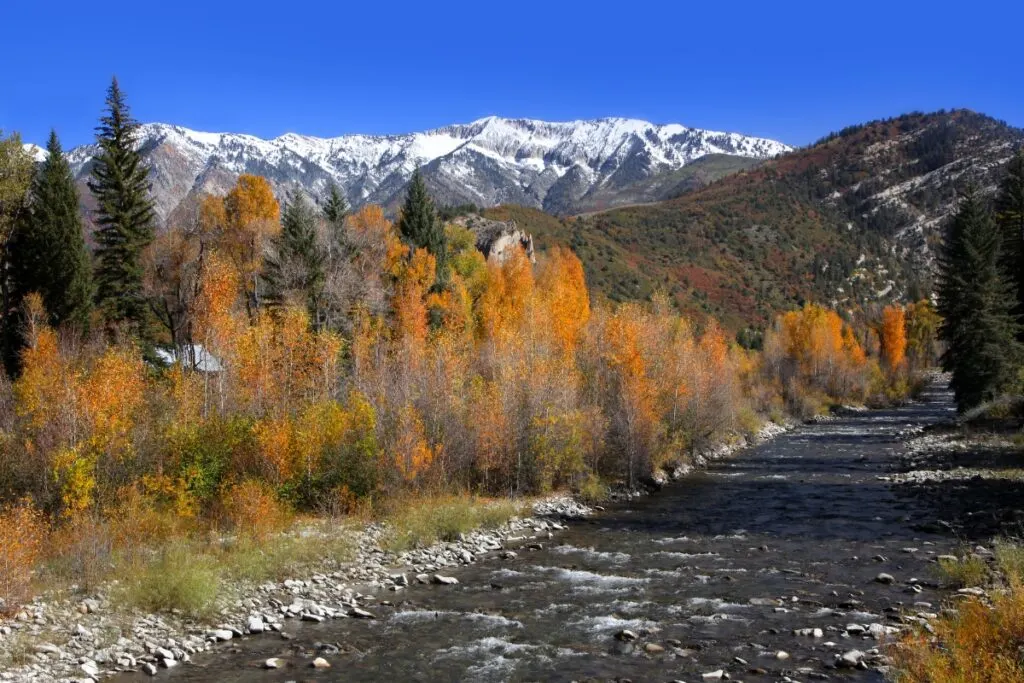
If you are interested in checking out the best rockhounding tools you can find them by clicking here (Amazon link).
What Rocks Are Found in Colorado
Colorado has a variety of distinctive sedimentary, igneous, and metamorphic rocks, including:
Quartzite
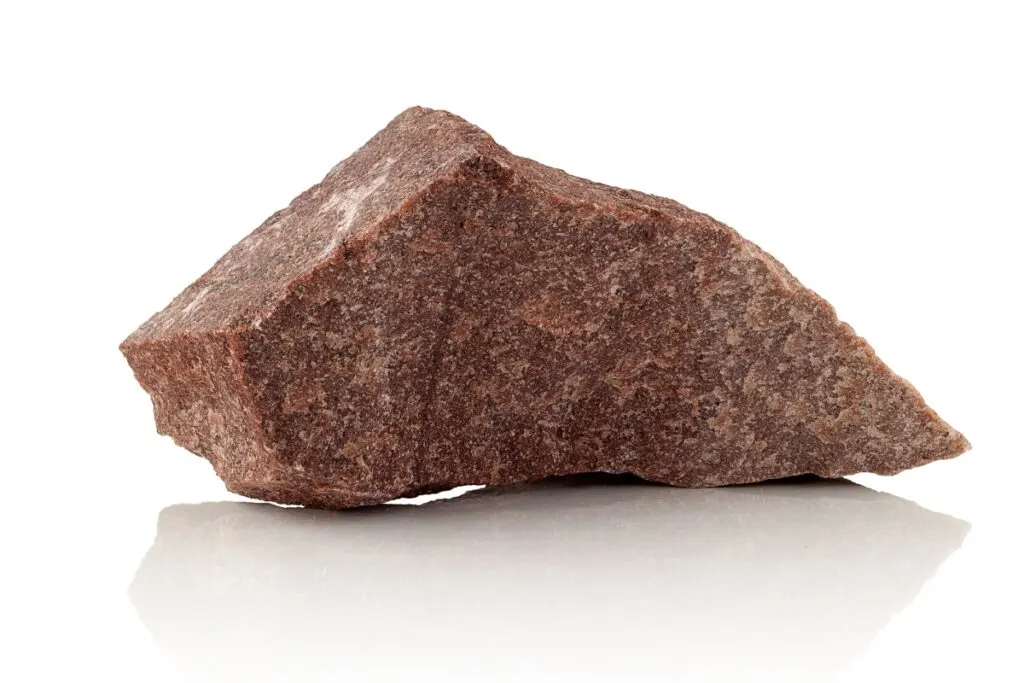
| Location | GPS Coordinates |
|---|---|
| Tenmile Range | 39.470131, -106.106197 |
| Lake County | 39.201399, -106.225677 |
| Eagle County | 39.632684, -106.265954 |
| Sawatch Range | 39.117616, -106.446045 |
| Manitou Springs | 38.854286, -104.933224 |
| Mosquito Range | 39.199624, -106.182647 |
| Quandary Peak | 39.396911, -106.106795 |
Colorado quartzite comes in multiple colors and contains large amounts of pyrite, which creates an illustrious shine.
Anyone who goes rockhounding near central Colorado has the opportunity to collect Sawatch Quartzite, which is white with ferruginous hints of red. Green and white quartzite is also common in Colorado, and you can find it near the Tenmile Range.
The Tenmile Range, Lake County, and Eagle County are some of the best places to find quartzite in Colorado. Luckily, this rock is so common that you can find it almost anywhere in the state, especially near the mountain ranges.
Recommendation box: All tools and equipment you need for rockhounding and rock identification* (Amazon links):
1. Estwing Rock Hammer – Light, comfortable, and extremely durable hammer.
2. Estwing Geologist Pick – Classic and the most trusted paleo pick in the world.
3. Finder 12-inch Chisels – Heavy-duty chisels set with hand protection.
4. Mini Handle Shovel – This is a great tool for digging deep in the dirt.
5 Ironclad Utility Work Gloves – Breathable, but they also protect the areas requiring them most.
6. 3M Safety Glasses – Comfortable and efficient goggles for rockhounding.
7. Convoy 8+ UV Light – 365nm UV LED flashlight with a patented glass filter.
8. Wesley’s Jewelers Loupe – High magnification options (30X and 60X) with carrying case.
9. Mohs Hardness Kit – A specially designed kit for rockhounds
*All recommended products are personally tested and regularly used by experts from this website.
Sandstone
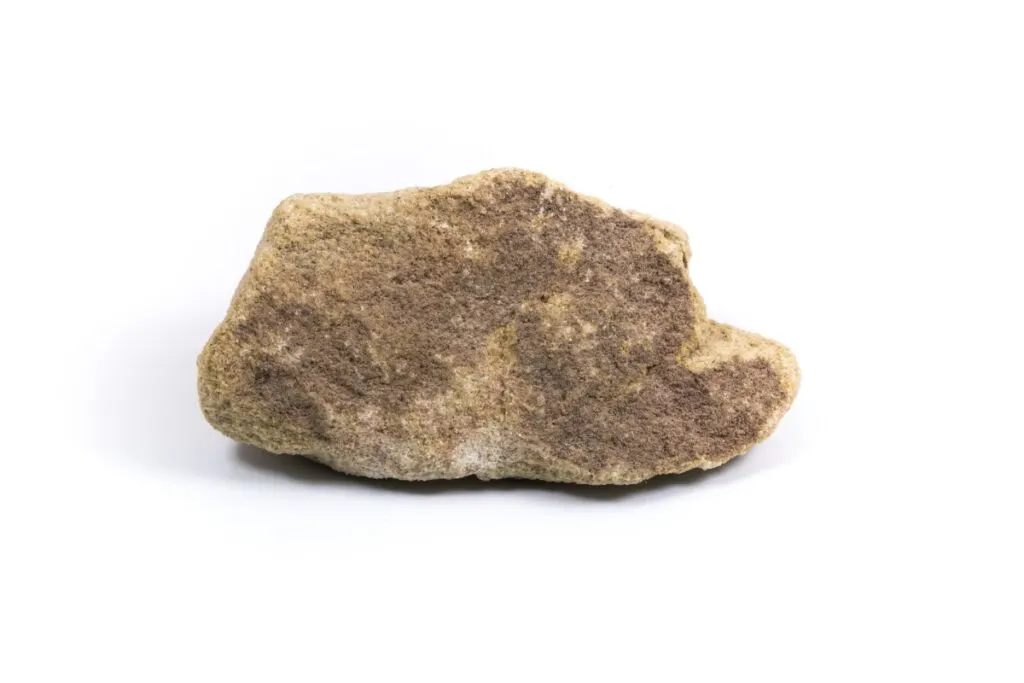
| Location | GPS Coordinates |
|---|---|
| Colorado Springs | 38.759474, -104.860682 |
| Fort Collins | 40.586098, -105.118467 |
| Manitou Springs | 38.863543, -104.904299 |
| Sawatch Range | 39.117616, -106.446045 |
| Cañon City | 38.439742, -105.257150 |
| White Canyon | 37.143968, -106.987005 |
| Meeker | 40.035003, -107.912396 |
In addition to Sawatch Quartzite, collect some Sawatch Sandstone for your collection. This sandstone is over 510 million years old and contains plenty of quartz and feldspar, so it glitters under the sunlight.
Another type of sandstone that’s found near Colorado Springs is Lyon Sandstone, which was formed over 250 million years ago. With its attractive reddish-white coloring, this sandstone is usually used for outdoor décor and construction.
From Colorado Springs to Meeker, you can find all kinds of sandstone across the various regions of Colorado. The type of sandstone you find will depend on the area you visit. For example, Sawatch Sandstone is typically found near the Sawatch Range.
Agate

| Location | GPS Coordinates |
|---|---|
| Twin Mountains | 37.765541, -106.466707 |
| Rabbit Valley | 39.171515, -109.021095 |
| Feltch Creek | 38.542681, -105.220778 |
| Austin Bluffs | 38.900836, -104.800448 |
| South Platte River | 39.308650, -105.200555 |
| Wolf Creek Pass | 37.482293, -106.802337 |
| Whitewater | 38.989124, -108.454195 |
Colorado is a great place for agate lovers to visit, especially those who want to collect blue agates.
Whether you are searching for blue or multicolored agates, Colorado rivers, and mountains are famous for their abundance of lovely agates. Additionally, this state has plenty of thundereggs, which can be filled with multicolored agates.
To collect Colorado agates, check near the Twin Mountains, Feltch Creek, or the South Platte River. You can also stop by Rabbit Valley and Wolf Creek Pass for some high-quality agates.
TIP: Agate is a type of semi-precious stone made of chalcedony and comes in a large range of colors. Find out more about agate in the article below:
What Is Agate And How Do Agates Form? Simple Explanation
Gabbro
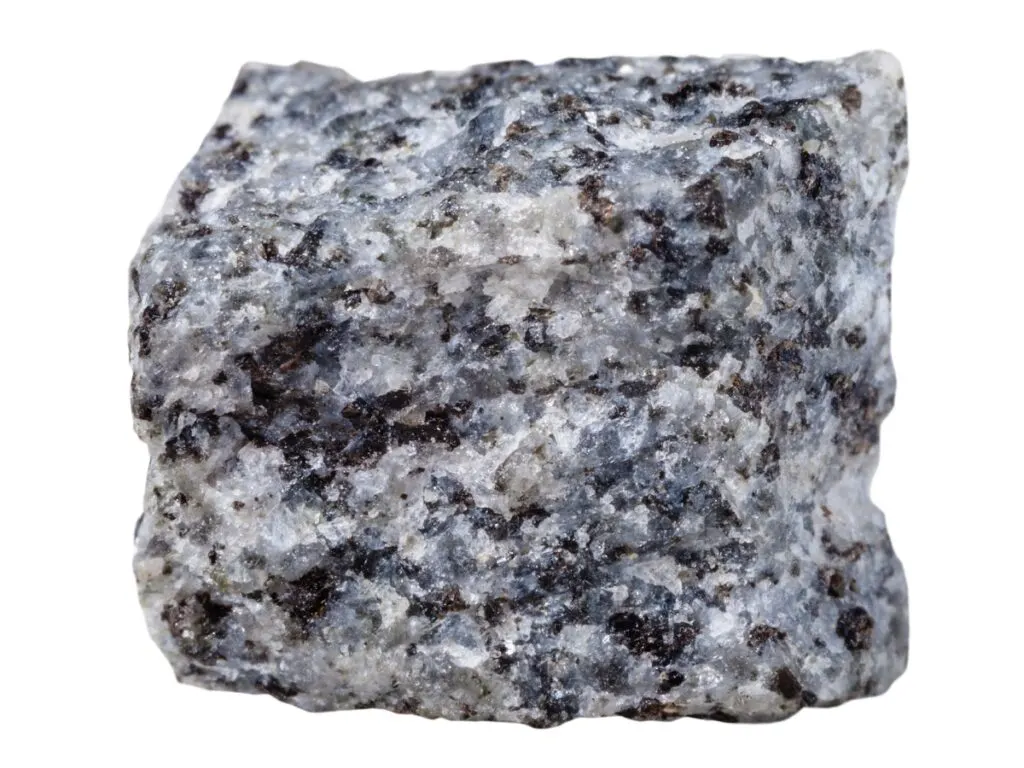
| Location | GPS Coordinates |
|---|---|
| Pikes Peak | 38.840502, -105.042474 |
| Longs Peak | 40.254612, -105.616244 |
| Wet Mountains | 38.092963, -105.260575 |
| Needle Mountains | 37.621461, -107.622861 |
| Electra Lake | 37.559796, -107.814202 |
| Routt | 40.455005, -106.743405 |
| Colorado Springs | 40.455005, -106.743405 |
Although Colorado only has one active volcano, there are multiple extinct volcanoes in this state that left behind igneous rocks such as gabbro.
Gabbro is a course, black rock that’s often called “black granite,” and it can be found all over Colorado, especially in the central regions.
While Pikes Peak and Long Peak are some of the best sites to find Gabbro, you can also look near the Needle Mountains or Electra Lake. Essentially, anywhere in Colorado where there was volcanic activity in the past is highly likely to have pieces of gabbro.
TIP: Earthquake zones are a suitable environment for various, often rare, rocks and minerals. Find out more in the article below:
Eight Most Common Rocks You Can Find In Earthquake Zones
Amphibolite
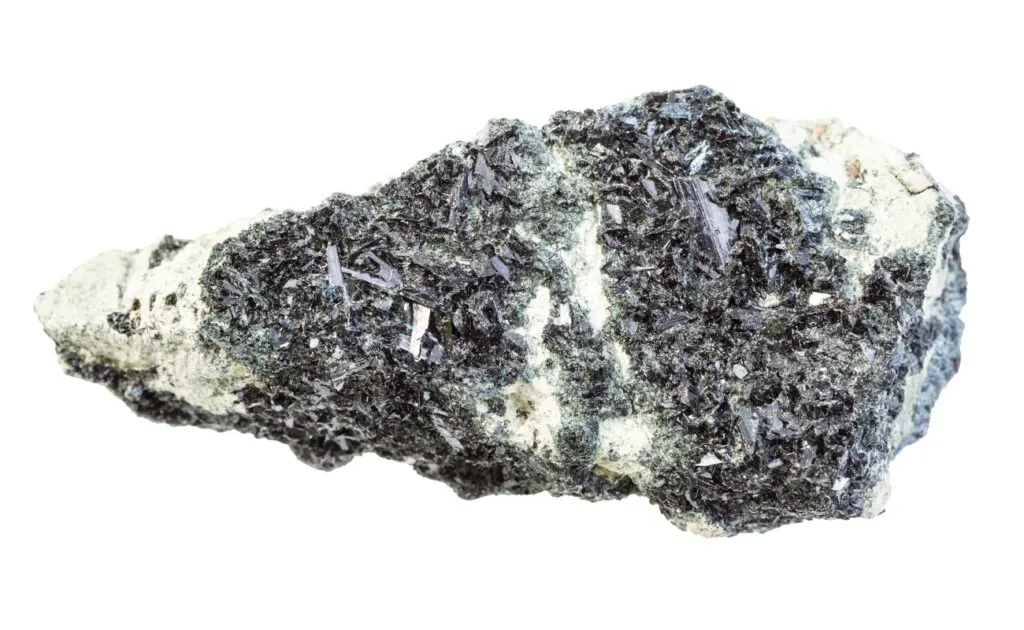
| Location | GPS Coordinates |
|---|---|
| Chaffee County | 38.952381, -106.253930 |
| Gunnison County | 38.535011, -106.929454 |
| Wet Mountains | 38.092963, -105.260575 |
| Clear Creek Canyon | 39.752566, -105.233833 |
| Big Thompson Canyon | 40.421012, -105.225564 |
| Blue River | 39.428976, -106.042589 |
| Needle Mountains | 37.621461, -107.622861 |
One of the most common metamorphic rocks that you’ll come across in Colorado is amphibolite. Amphibolite is a metamorphic stone that’s usually black in color, but the ones found in Colorado can display green, blue, and brown shades.
You can find amphibolite in many of Colorado’s canyons, such as the Big Thompson Canyon and Clear Creek Canyon.
Gneiss

| Location | GPS Coordinates |
|---|---|
| Golden | 39.766397, -105.220454 |
| Park County | 39.273845, -105.983740 |
| Front Range | 39.633557, -105.817202 |
| Boulder County | 40.035166, -105.372207 |
| Fremont County | 38.459899, -105.406589 |
| Idaho Springs | 39.738960, -105.515122 |
| Wet Mountains | 38.092963, -105.260575 |
According to a survey of Colorado’s geology, gneiss is the most common rock found in the Centennial State, and it’s also one of the oldest.
As a matter of fact, certain types of Colorado gneiss are over 1.7 billion years old. In this state, gneiss comes in grey, black, or pink, and you’ll often find it with pegmatites.
Look near Boulder County, Fremont County, and Park County for some beautiful pieces of gneiss to add to your collection.
BTW: Do you want to know more about rock and mineral identification? The books listed below are the best ones you can find on the internet (Amazon links):
- Smithsonian Handbooks: Rocks & Minerals
- Gemstone & Crystal Properties (Quick Study Home)
- Ultimate Explorer Field Guide: Rocks and Minerals (National Geographic Kids)
What Minerals Are Found in Colorado
From smoky quartz to topaz, there are a variety of minerals hidden within the rocks of the Centennial State, such as:
Smoky Quartz
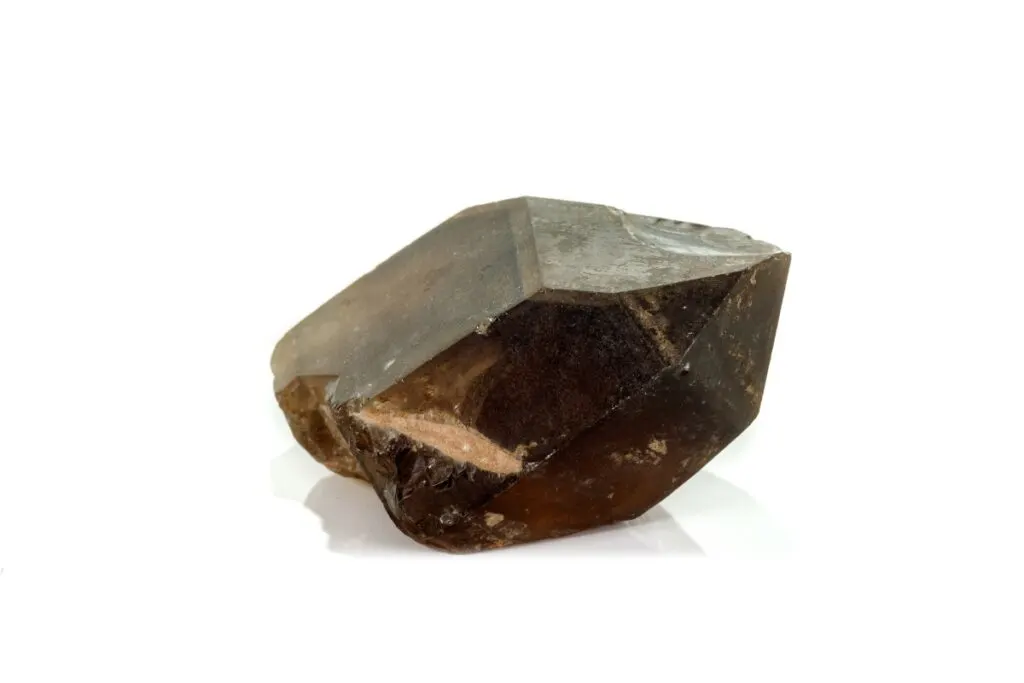
| Location | GPS Coordinates |
|---|---|
| Eight Mile Park | 38.490872, -105.337941 |
| Pikes Peak | 38.840435, -105.042732 |
| El Paso County | 38.799665, -104.926020 |
| Crystal Peak | 38.995291, -105.289074 |
| Mount Antero | 38.673483, -106.246645 |
| Devils Head | 39.259968, -105.100757 |
| Lake George | 38.978646, -105.365605 |
| Park County | 38.999027, -105.884863 |
Smoky quartz, which is valued for its dark coloring that displays a honey-like color when exposed to light, is one of the most popular minerals that rockhounds find in this state.
Interestingly, smoky quartz and amazonite are usually found together in Colorado, and the contrast between the bright blue-green amazonite and black-to-dark gray smoky quartz is truly a sight to behold.
Explore Eight Mile Park, Pikes Peak, and Mount Antero for high-quality pieces of smoky quartz and amazonite. You can also check out the Amazonite locations listed below since it’s often found with smoky quartz.
TIP: There are numerous fake quartz crystals you can come across in the market, even if quartz is the most widespread mineral. Find out more in the article below:
Real vs. Fake Quartz: Focus on These 12 Key Differences
Amazonite

| Location | GPS Coordinates |
|---|---|
| Pikes Peak | 38.841304, -105.043161 |
| Teller County | 38.935178, -105.079793 |
| Sugarloaf | 40.026126, -105.418392 |
| Cook Mountain | 40.214901, -105.405871 |
| Cheyenne Mountain | 38.736944, -104.880806 |
| Crystal Peak | 38.995291, -105.289074 |
| Harris Park | 39.514368, -105.505573 |
| Pine Creek | 39.325352, -105.114078 |
Colorado amazonite is highly desired by mineral enthusiasts due to its eye-catching blue-green color, which is a stark contrast from the smoky quartz that’s often discovered with it.
This mineral is not easily found in other U.S. states, and the pieces that are mined from Colorado are of incredible quality.
While Pikes Peak is the best place to look for Amazonite, you can also check out Teller County, Sugarloaf, and Cook Mountain.
Aquamarine
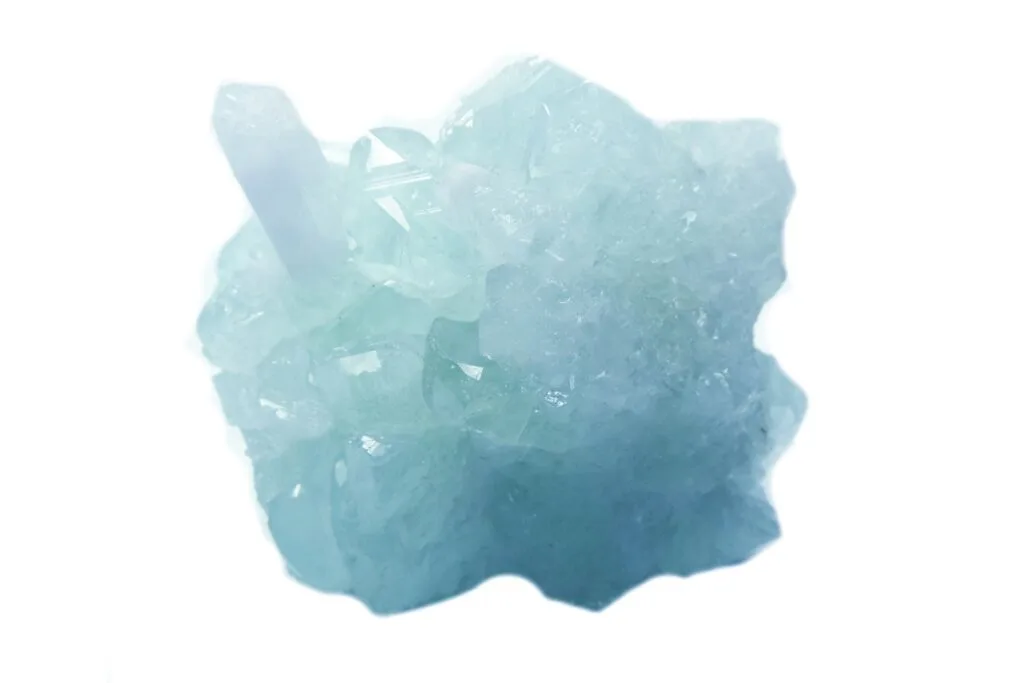
| Location | GPS Coordinates |
|---|---|
| Mount Antero | 38.673483, -106.246645 |
| Mount White | 38.656264, -106.223035 |
| Mount Princeton | 38.748971, -106.242564 |
| Centennial Cone | 39.751992, -105.358452 |
| Fremont County | 38.435162, -105.484870 |
| Clear Creek County | 39.710955, -105.659069 |
| Gunnison County | 38.578174, -106.849774 |
On the mountaintops of Mount Antero and the White Mountains, you can find Colorado’s state gemstone, aquamarine.
Colorado has some of the finest gem-quality aquamarine in the U.S., so it’s a top priority for rockhounds in this state. This stunning bluish-green gemstone is usually discovered in granite pegmatite, and it possesses very few flaws.
While the aquamarines themselves are small and rarely exceed ten carats, it’s their lovely color and near-perfect quality that makes them valuable.
If you want to find aquamarines of the highest quality, your next stops should be near Mount Antero and Mount White.
TIP: People become geologists and geoscientists because of their love and appreciation of nature. Check out the complete guide on how to become a geologist in the article below:
How to Become A Geologist (Time, Costs, Skills & More)
Rhodochrosite
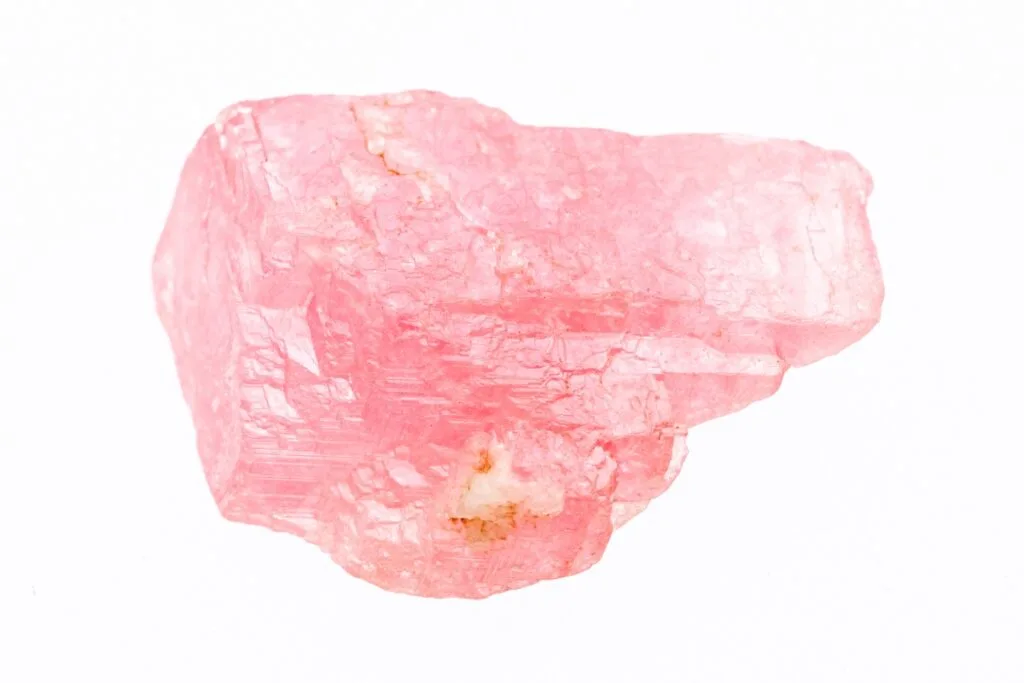
| Location | GPS Coordinates |
|---|---|
| Sweet Home Mine | 39.312567, -106.118288 |
| Alma | 39.283410, -106.081842 |
| Gilpin County | 39.847892, -105.598559 |
| San Juan County | 37.795621, -107.757113 |
| Buckskin Gulch | 38.337750, -105.388458 |
| Eureka | 37.873606, -107.563271 |
| Willis Gulch | 39.066258, -106.390303 |
Did you know that Colorado is one of the few locations in the world where you can find gem-quality rhodochrosite?
Rhodochrosite is usually a rose-red hue with bands of white, but the ones in Colorado can appear pink to brown in color. Even though gem-quality rhodochrosite from Colorado is valuable today, it was once discarded as a byproduct from silver mines in the state.
To find rhodochrosite, check outside of old silver mines in Colorado, such as the Sweet Home Mine, which is famous for its pieces of rhodochrosite. You can also explore the areas outside of Alma, Gilpin, and San Juan for this rosy mineral.
Topaz
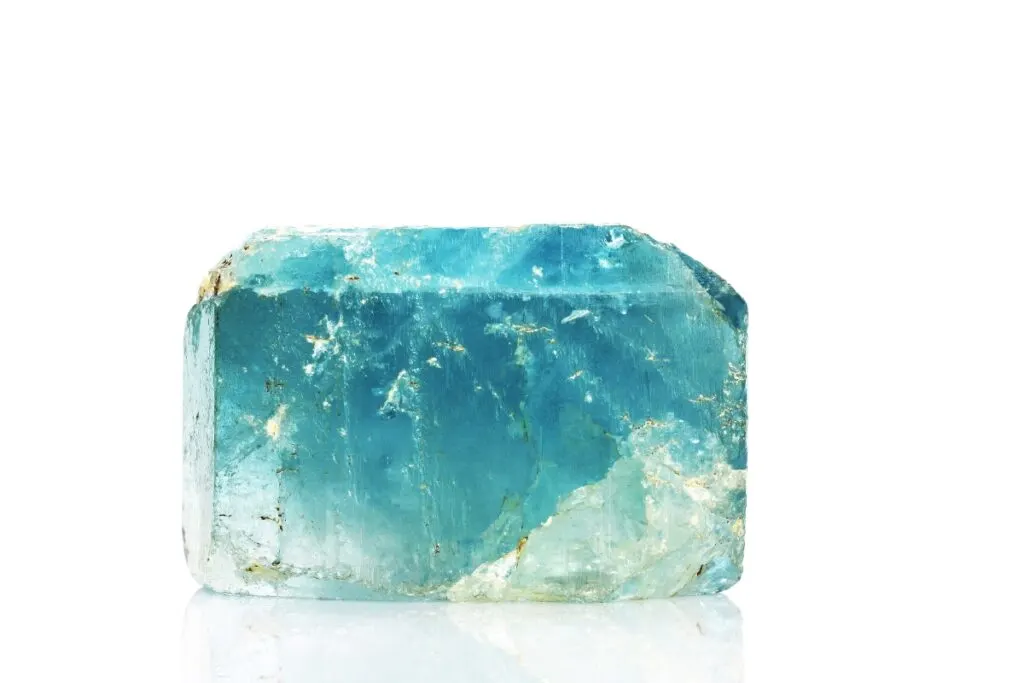
| Location | GPS Coordinates |
|---|---|
| Tarryall Mountains | 39.231746, -105.528316 |
| Pikes Peak | 38.840502, -105.042302 |
| Mount Antero | 38.673416, -106.246817 |
| Ruby Mountain | 38.749450, -106.066874 |
| Crystal Park | 38.831409, -104.930867 |
| Long Hollow | 39.182124, -105.134414 |
| Lake George | 38.978279, -105.365605 |
| Glen Cove Creek | 38.891177, -105.076458 |
If you notice a shiny mineral in a slab of Colorado granite, it might be topaz. Large pieces of topaz have been found in the mountainsides and cliffs, and some of them are even over a pound.
Although Colorado topaz is typically clear or yellow, some fortunate rockhounds have found light pink and pale blue topaz in certain regions of the state. Natural blue topaz is rare, and a few of the best pieces have been found near Glen Cove, Colorado.
Almost every Colorado local will tell you that Pikes Peak is the place to go for topaz, but the Tarryall Mountains and Ruby Mountain have produced beautiful pieces of topaz, so don’t disregard them during your search!
TIP: The best places to find topaz are mines, mine dumps, quarries, or even gravel pits. Check out the complete guide on finding topaz in the article below:
Where to Find Topaz: Best Environments & Locations (USA)
Zircon
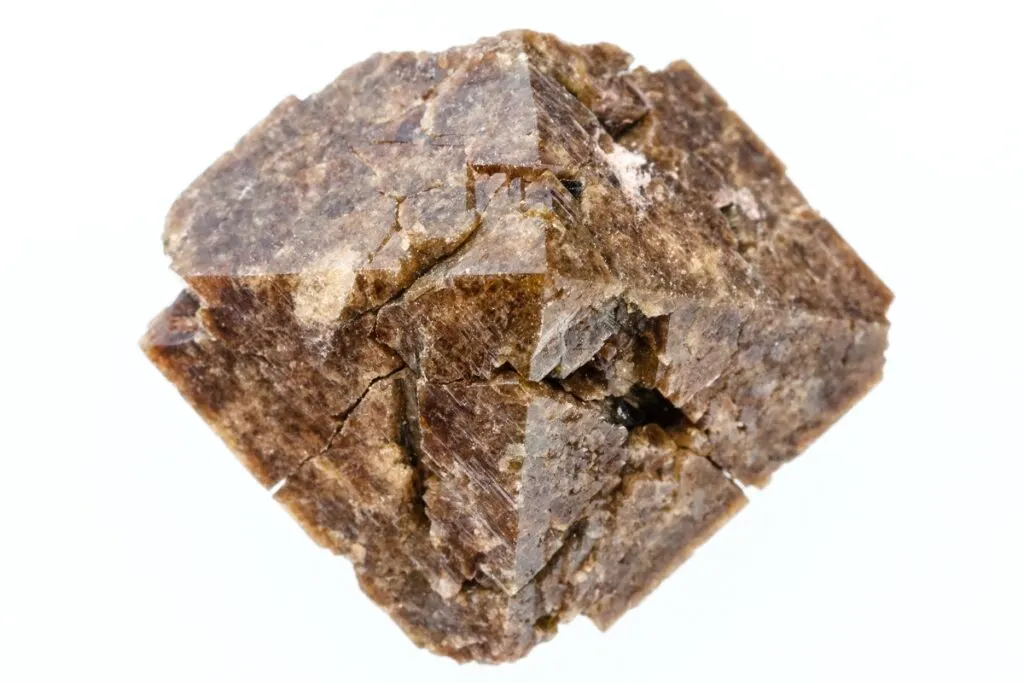
| Location | GPS Coordinates |
|---|---|
| St. Peters Dome | 38.747128, -104.911597 |
| Pikes Peak | 38.840502, -105.042302 |
| Eureka Tunnel | 38.751531, -104.905016 |
| Bear Creek | 38.818792, -104.893585 |
| N Cheyenne Canyon Road | 38.791990, -104.884971 |
| Helen Hunt Falls | 38.788433, -104.903459 |
| Rock Creek | 38.687199, -104.871088 |
| Colorado Springs | 38.759474, -104.860682 |
Zircon, a colorful mineral that’s known for its luster and fire, can be found in all types of Colorado rocks, including sedimentary, metamorphic, and even igneous rocks.
This unique mineral comes in almost all the colors of the rainbow, including clear. Although the color of zircon may vary, all stones display the same brilliant fire that they are known for.
St. Peters Dome, Pikes Peak, and Bear Creek are some of the most popular Colorado rockhounding sites for topaz, so be sure to stop by during your excursions.
Gold
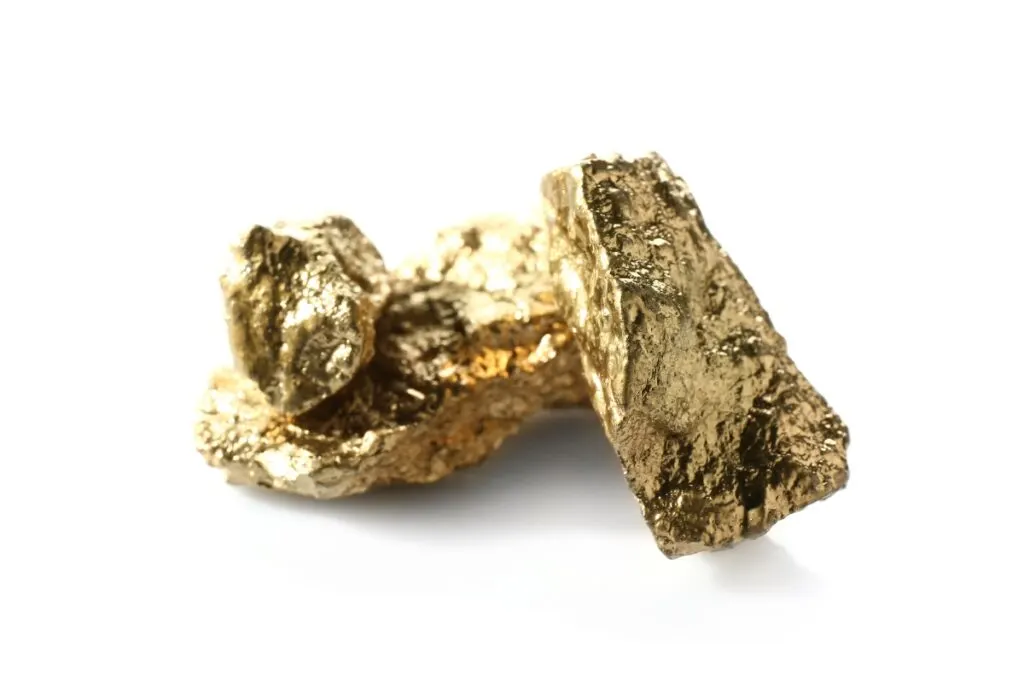
| Location | GPS Coordinates |
|---|---|
| Phoenix Gold Mine | 39.748809, -105.565825 |
| Mollie Kathleen Gold Mine | 38.752809, -105.160450 |
| Cripple Creek & Victor Gold Mine | 38.753662, -105.147957 |
| Castlewood Canyon State Park | 39.333576, -104.740042 |
| Gold Strike Park | 39.798023, -105.055912 |
| Arkansas River | 38.485568, -105.406930 |
| Alamosa River | 37.398101, -106.838714 |
| Blue River | 39.428119, -106.042673 |
While Colorado’s gold rush might not be as famous as the one in California, the Colorado Gold Rush brought in over 100,000 miners during the mid-1800s.
As a matter of fact, the Colorado Gold Rush is the second-largest mining excitement in U.S. history after the California Gold Rush. Most rockhounds find gold flakes in the rivers and streams of Colorado, but even though gold nuggets are more elusive, you can find them in certain regions.
As long as you know how to pan and what rocks to look for when gold prospecting, you should have no problem finding gold in Colorful Colorado.
Fortunately, there has been a ton of gold found all over Colorado, especially since this state is one of the leading U.S. producers of the shiny mineral. Start panning at the Colorado gold mines to take home this valuable mineral for your collection.
TIP: There are so many great places to find gold in Colorado. Check out the complete guide in the article below:
Gold Prospecting in Colorado: 7 Best Locations & Laws
FAQ About Common Rocks & Minerals in Colorado
Learn more about Colorful Colorado’s rocks and minerals with this FAQ section:
What Rare Rocks Can You Find in Colorado
Since Colorado contains sedimentary, metamorphic, and igneous rocks, there’s no shortage of rare rocks in this state. Rare rocks that exist in Colorado include:
- diorite,
- quartzite,
- agate,
- geodes,
- and jasper.
Whether you prefer multicolored pieces of quartzite or patterned agates, rockhounds are sure to find a great assortment of rare rocks in Colorful Colorado.
To find multiple rocks from a single location, the best sites to visit include the Twin Mountains, Wet Mountains, and Needle Mountains. Some rockhounds also look near the streams and rivers that run through these mountains to find various rocks and minerals.
What Rare Minerals Can You Find in Colorado
Since Colorado has over 445 mineral species, it makes sense that rockhounds can find all sorts of rare gemstones and minerals in the mountains or rivers of Colorado.
Some rare gemstones and minerals that rockhounds can pick up from Colorado include:
- smoky quartz,
- amazonite,
- rhodochrosite,
- garnet,
- amethyst,
- sapphire,
- topaz,
- turquoise,
- blue barite,
- opal,
- aquamarine,
- lapis lazuli,
- gold,
- peridot,
- zircon,
- and diamond.
Out of this list, the rare minerals that are often associated with Colorado include smoky quartz, amazonite, and rhodochrosite.
The Centennial State is famous for producing high-quality pieces of these three minerals, and Colorado even holds the record for the world’s largest rhodochrosite crystal, which was found near Alma.
While you might not find all these minerals during your first trip to Colorful Colorado, there are specific locations where you can collect multiple types of gemstones and minerals at once.
During your Colorado travels, plan a trip to Pikes Peak, Mount Antero, and Colorado Springs to obtain some of the best minerals that the state has to offer.
BTW: If you are looking for the best UV light for rockhounding, find out my picks below (Amazon links):
- BEST OPTION: Convoy 8+ 365nm UV LED Flashlight with Patented Glass Filter
- BUDGET OPTION: Karrong Rechargeable 1200 Lumen 395nm UV Flashlight
- OPTION FOR INDOOR USAGE: Prime Upgraded Big Chip 396nm UV
What is the Most Famous Rock or Mineral Found in Colorado
When rockhounds think of Colorado, two minerals immediately come to mind: smoky quartz and amazonite.
The reason these two minerals are famous in Colorado is because they are usually found together, which is a sight to behold.
With their boldly contrasting colors, it’s easy to see why the combination of black smoky quartz, and bright blue-green amazonite is popular among collectors.
Some of the best pieces of smoky quartz and amazonite are from Colorado, so don’t pass up the opportunity to find some during your stay!
Any rockhound who’s on the hunt for smoky quartz and amazonite should visit Pikes Peak, Crystal Park, and Devil’s Head.
These three spots are well known for their high-quality smoky quartz and amazonite specimens, so be sure to visit these locations before exploring other areas in the state.
Conclusion
Colorful Colorado, a state that’s famous for its breath-taking landscape and wildlife, has some of the most unique rocks and minerals that you can find in the U.S.
During your Colorado rockhounding travels, maybe you’ll find a colorful rhodochrosite crystal or an eye-catching piece of smoky quartz and amazonite. With its abundance of rocks, minerals, and gemstones, this state has everything a rockhound could want.
Before you book your trip to Colorado, make some room in your collection for all the special and beautiful treasures that you’ll find in the Centennial State!
TIP: There are plenty of gems in Colorado for you to dig. Check out the complete guide on rockhounding in Colorado in the article below:
Can You Dig for Gems in Colorado? Tips Where & What To Find
